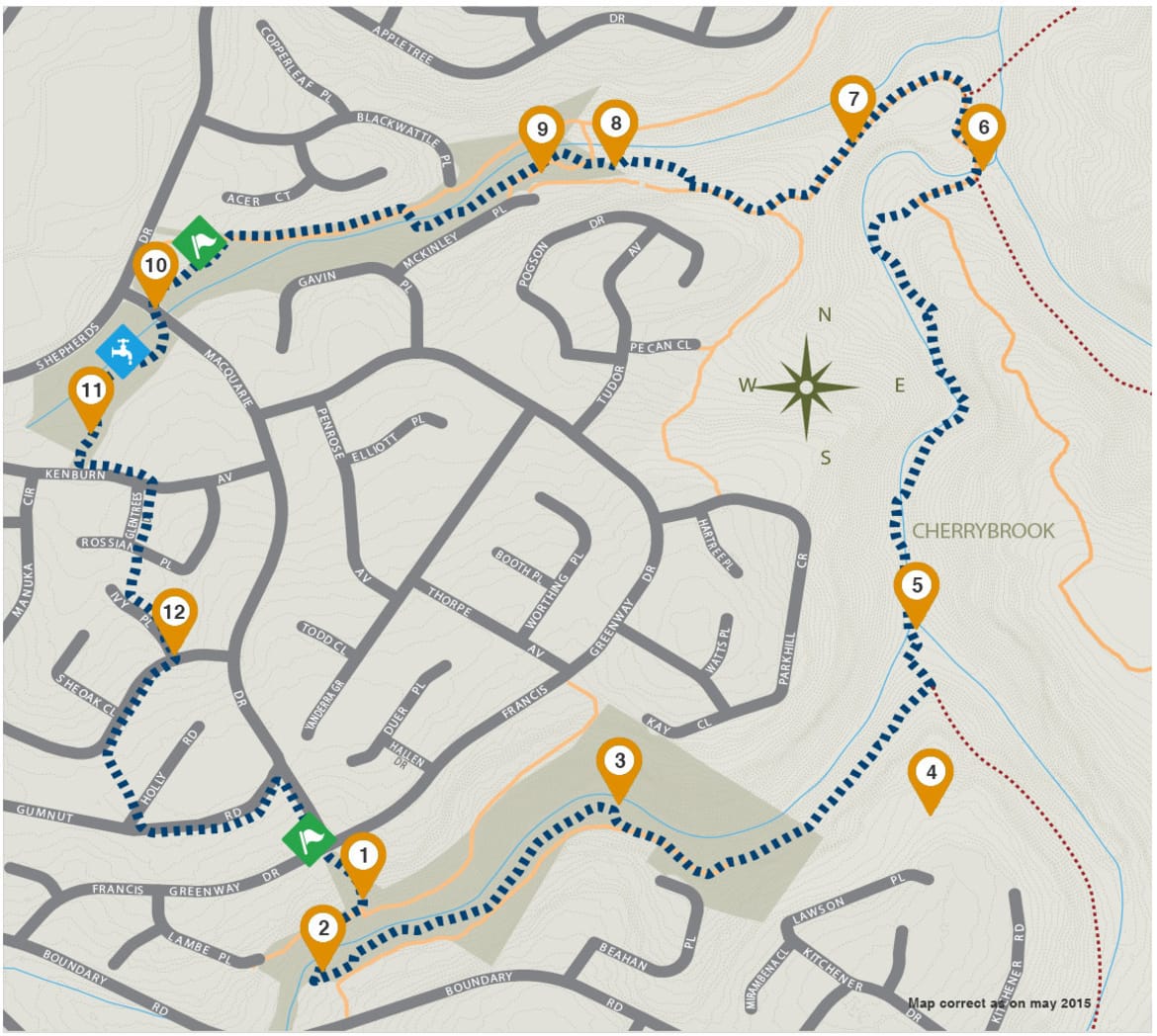This spectacular area with its high vantage point and sculpted sandstone overhangs features Hawkesbury Sandstone, and underlies much of the Sydney region. Feel the sand and quartz grains laid down around 200 million years ago, when Sydney was a vast floodplain and dinosaurs roamed the earth. When sandstone weathers, it produces a shallow, sandy, infertile soil that is unable to retain much moisture. To survive these difficult conditions some plants have tough, thin leaves and small or woody fruit. Look for the flower spike of the Grass Tree (Xanthorrhoea spp.), the grape-like fruit of the Geebung (Persoonia spp.) and the woody ‘cone’ of the Banksia (Banksia spp.).


